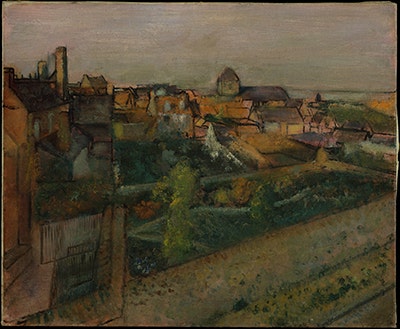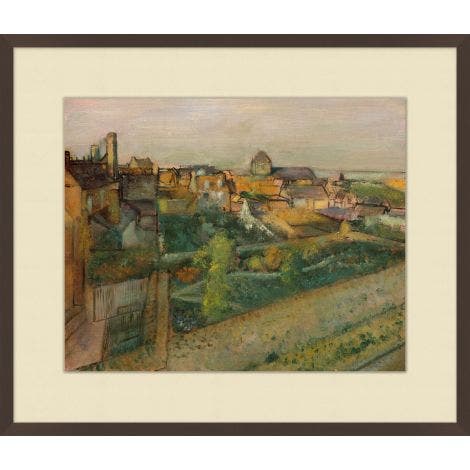Local Storage seems to be disabled in your browser.
For the best experience on our site, be sure to turn on Local Storage in your browser.
City View

Our Inspiration:View of Saint-Valéry-sur-Somme
Edgar Degas (French, 1834–1917)
Oil on canvas, 20 x 24 in., 1896–98
Robert Lehman Collection, 1975 1975.1.167
Degas’s provencal painting of Saint-Valéry-sur-Somme, a medieval town on the Picardy coast, surveys the site from an elevated vantage point, lending a view of rooftops and facades as well as backyards and gardens. This landscape was painted in the artist’s studio, where he experimented with the structure of his many pictures of the town. The particularly ambiguous foreground and fractured elements in the background may result from synthesizing two separate drawings sketched on site, the left half aligning with one sketch and the right with another. Degas once advised: “A painting is something that requires as much trickery, malice, and vice as the perpetration of a crime, so create falsely and add a touch from nature.”

Our Inspiration:View of Saint-Valéry-sur-Somme
Edgar Degas (French, 1834–1917)
Oil on canvas, 20 x 24 in., 1896–98
Robert Lehman Collection, 1975 1975.1.167
Degas’s provencal painting of Saint-Valéry-sur-Somme, a medieval town on the Picardy coast, surveys the site from an elevated vantage point, lending a view of rooftops and facades as well as backyards and gardens. This landscape was painted in the artist’s studio, where he experimented with the structure of his many pictures of the town. The particularly ambiguous foreground and fractured elements in the background may result from synthesizing two separate drawings sketched on site, the left half aligning with one sketch and the right with another. Degas once advised: “A painting is something that requires as much trickery, malice, and vice as the perpetration of a crime, so create falsely and add a touch from nature.”


